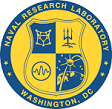NRL invokes cost-effective approach to improve joint ISR missions
 U.S. Naval Research Laboratory (NRL) teams with San Diego, CA-based General Atomics Aeronautical Systems Inc. (GA-ASI) to integrate maritime mode inverse synthetic aperture radar (maritime-ISAR) imaging capability with GA-ASI’s Lynx Multi-Mode Radar — a standard payload for the United States Air Force MQ-9 Reaper and Predator XP systems, the agency announced May 10.
U.S. Naval Research Laboratory (NRL) teams with San Diego, CA-based General Atomics Aeronautical Systems Inc. (GA-ASI) to integrate maritime mode inverse synthetic aperture radar (maritime-ISAR) imaging capability with GA-ASI’s Lynx Multi-Mode Radar — a standard payload for the United States Air Force MQ-9 Reaper and Predator XP systems, the agency announced May 10.
Intelligence, Surveillance and Reconnaissance (ISR) communities around the world are exploring ways in which different services can collaborate on naval missions. These communities envision Unmanned Aerial Systems (UAS) capable of supporting joint warfighter missions over land, littoral and blue water regions.
“Because ships and small watercraft at sea are usually in motion — having both forward velocity and other linear and angular motions, for example, pitch and roll and heave and sway — this creates a problem for typical ISAR platforms,” said Thomas Pizzillo, head, NRL Radar Analysis Branch. “The addition of a maritime-ISAR mode to the General Atomics Lynx radar, as a software only upgrade, is the most cost effective alternative to introduce this capability to the MQ-9 fleet.”
Synthetic Aperture Radar (SAR) is a radar imaging method using multiple pulses transmitted from a moving platform. The received signals are combined to form a high quality two-dimensional (2D) image of the ground-terrain of interest. Classical SAR algorithms assume the target scene (background) is stationary and any motion in the scene shows up as a smear or streak in the image. ISAR algorithms assume the target itself is moving, and through a set of complex algorithms, calculates enhanced angular or cross-range resolution by analyzing subtle differences in range-rates caused by the target motion. The net effect is to focus the image of a moving target without smearing.
“Often with unknown velocities, both linear and angular, it is a much more difficult problem because the motions are not known as in typical ISAR,” Pizzillo says. “NRL has successfully adapted the necessary changes to ISAR image formation in which the rotational motion of the target is not known beforehand. This provides the end-user with an imaging software tool that can produce high-quality imagery in conditions with significantly complex target motion.”
The NRL radar group is one of the world’s leading experts on naval radar and offers unique expertise in the development and deployment of ISAR algorithms; signal and data processing techniques associated with ISAR; and validation of ISAR performance in a large spectrum of naval environments. Through this Cooperative Research and Development Agreement (CRADA), GA-ASI systems equipped with NRL-developed maritime and ISAR software enhancements will have greater real-time object classification capability and improved joint-ISR capabilities across aerial, naval and terrestrial battlespace platforms.
NRL invented, developed, and installed the first operational U.S. radar, the XAF, on the battleship USS New York in 1939. It was rapidly transferred to industry for production. By the time of the attack on Pearl Harbor, 20 radar units were in operation. Radar of this type contributed to the victories of the Coral Sea, Midway, and Guadalcanal.
Source: U.S. Naval Research Laboratory







